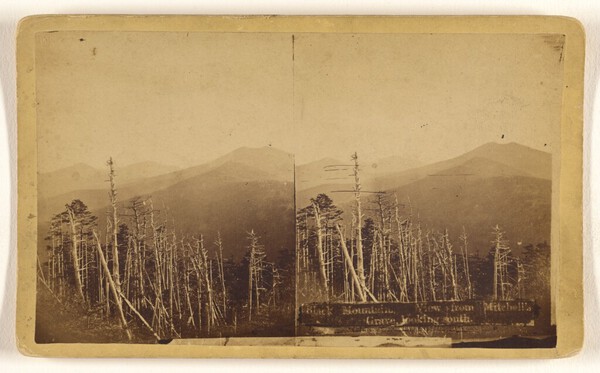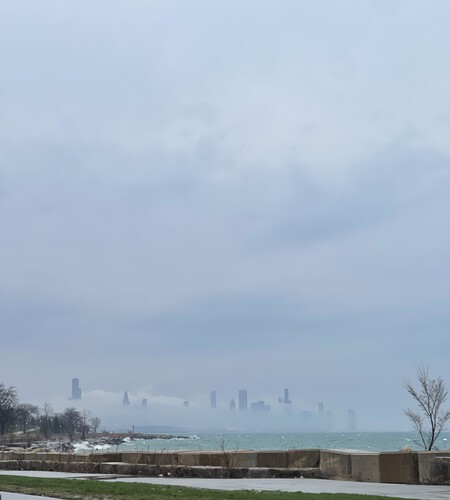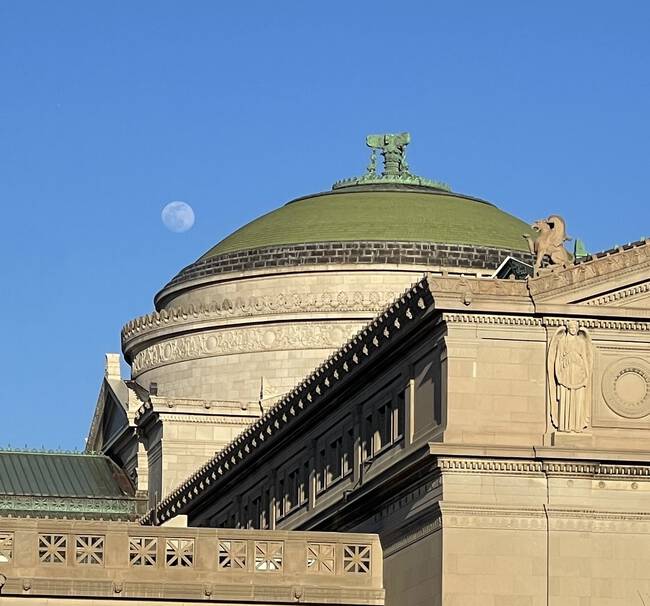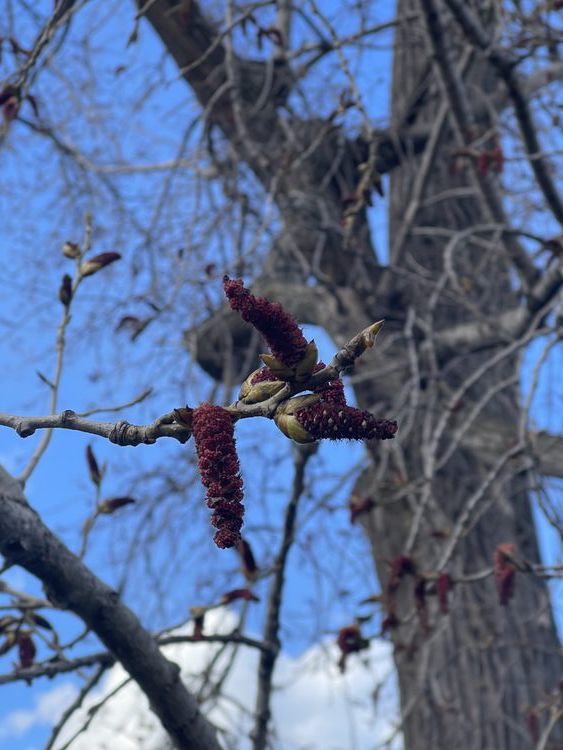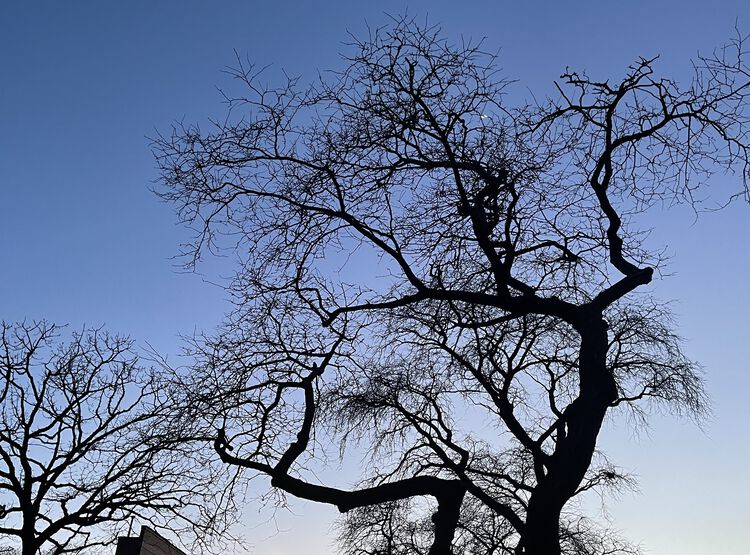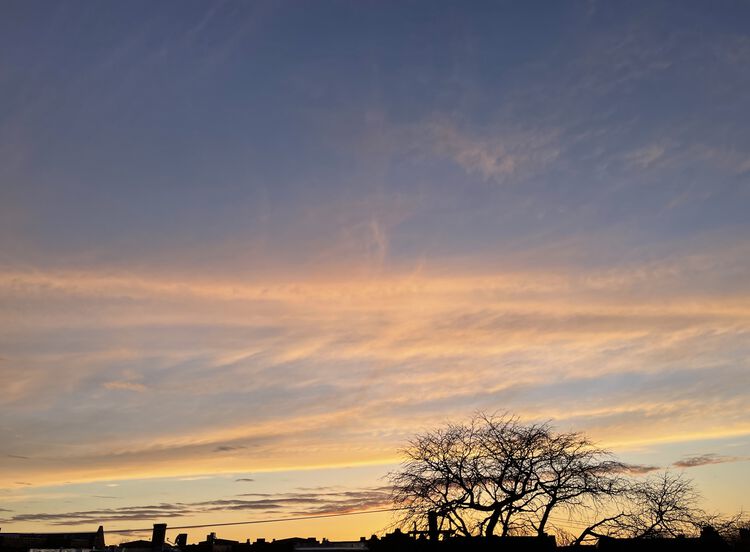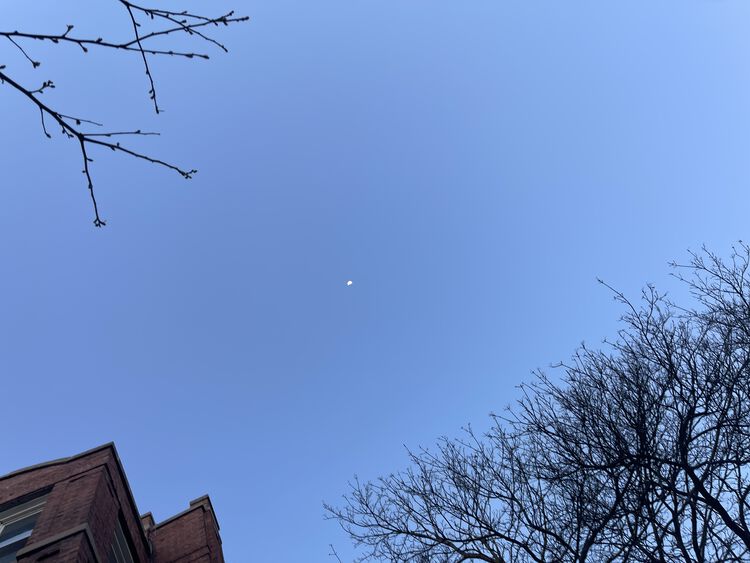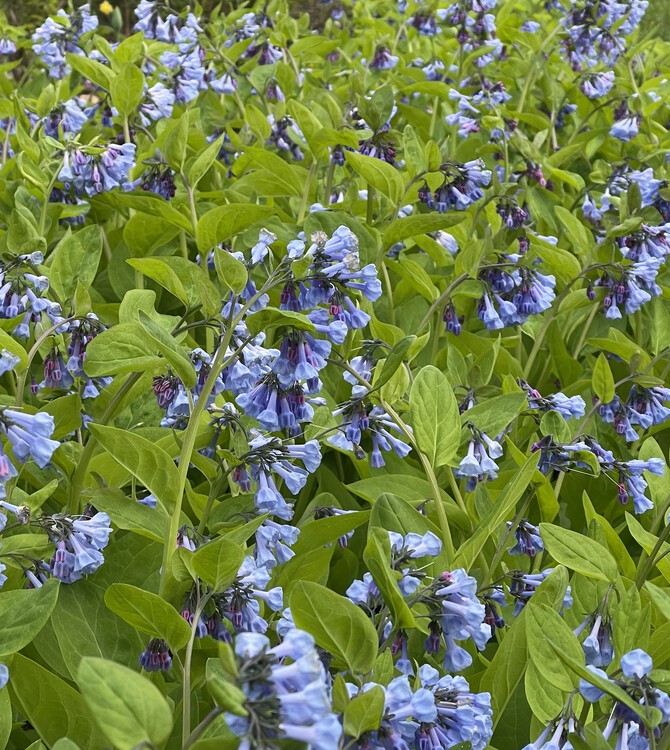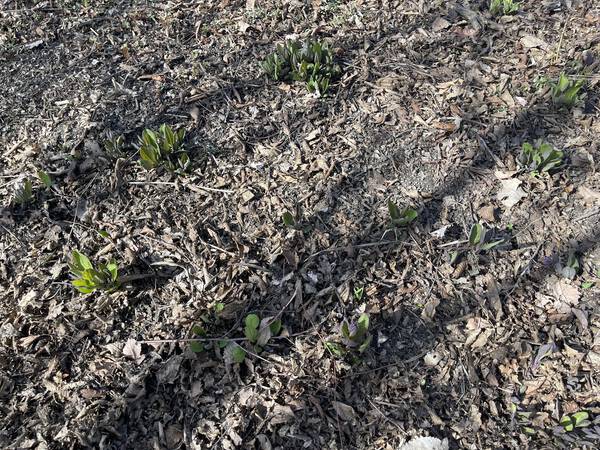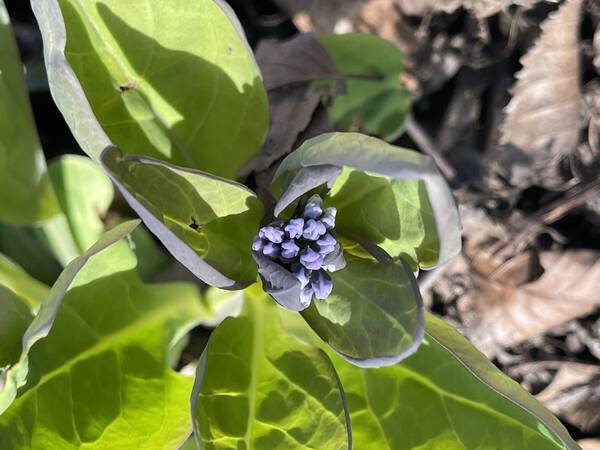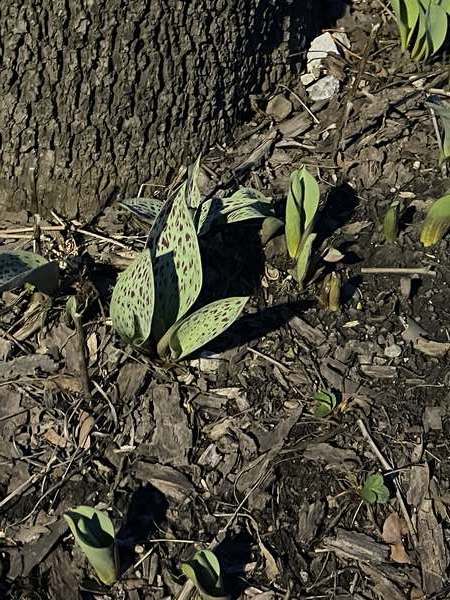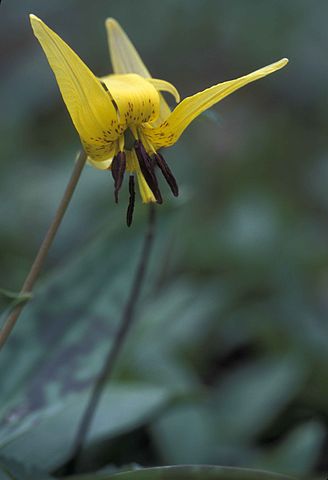Light Patterns in the Young Crescent Moon
The last few days have seen a string of mostly clear weather in the evening, just as the moon begins a new monthly cycle. One of the nice things about looking at a very young moon (~2-5 days) is that it appears low in the western sky around sunset (which occurs after 8pm right now), timed as the day is slowing down and it’s convenient to look outside for a while. I started studying this cycle’s crescent moon with binoculars when it was just over two days old.
A moon of that age is a beautiful sight: large enough to be easily seen, but still very delicate, so thin at its sharp points (lunar observers call them “horns”) that it is possible to imagine that the moon is made up of a bunch of stars clustered near each other.
A feature on the horns caught my attention through the binoculars. At the leading edge of the sunlight cast onto the moon, where the thinnest possible segment of lighted lunar surface faces the earth, the moon’s light becomes discontinuous. Through the binoculars it looks like four or five bright lines or smudged dots, with short breaks, as black as the rest of space, in between. Here is a rough diagram of the crescent moon and where the effect appears—although it’s not visible to the eye alone:
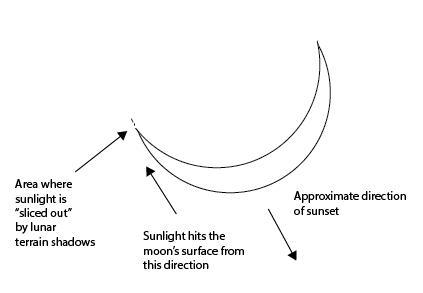
Through the binoculars, it’s not obvious what’s causing this. A little digging gets an answer. The moon’s surface near its visible southern pole is cratered and bumpy. The sun’s light, which hits the surfaces near the horn at a nearly 90-degree angle, doesn’t reach the bottom of every crater, canyon floor and plain. At the most extreme angles of illumination, the sunlight only reflects off the highest points on the lunar surface, and the shadows are so deep that huge patches of dark occur right alongside the high points that are lit. This is what creates the broken appearance at the southern horn.
Read more →

